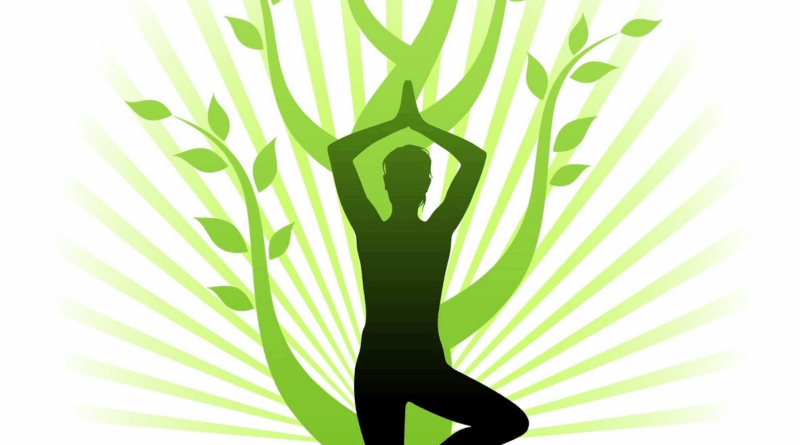Sustainable Wellness Routine 2026: A Complete, Science-Backed Guide to Living Well—and Lightly—on the Planet
Why 2026 Is the Tipping Point for Sustainable Wellness
By the end of 2023, the global wellness economy reached US$ 6.3 trillion and is on track to hit nearly US$ 9 trillion by 2028, out-growing world GDP by a wide margin. Consumers are no longer satisfied with feeling good alone; they want to feel good while doing good.
Surveys show 72 % of Gen Z and 58 % of Millennials actively look for products or habits that cut carbon or waste.
Ask yourself: If personal health and planetary health are converging, what does your daily routine look like in 2026?
This guide gives you a step-by-step blueprint—rooted in the latest nutrition science, wearable tech, mental-health micro-practices, and low-impact movement—so you can design a lifestyle that is both sustainable and sustaining.
Table of Contents
The Core Daily Framework
| Time of Day | Goal | Key Practices | Why It Matters |
| Morning | Synchronize circadian rhythm | Natural light within 30 min of waking; protein-rich plant breakfast | Better sleep onset; hormonal balance |
| Mid-day | Low-impact, high-return movement | 10-minute micro-workouts; active commuting; walking meetings | A 2024 Harvard study showed memory boosts lasting 24 hours after moderate activity |
| Afternoon | Planet-positive refuel | Planetary Health Plate 2.0 lunch, regenerative snacks | Adhering to the diet cuts premature-death risk by 30 % and CO₂ by 29 % |
| Evening | Digital declutter & sleep hygiene | Blue-light filters after sunset; 3-minute breathwork; 18 °C bedroom | 7-minute breath or micro-meditation sessions slash perceived stress |
(Use the table as a quick reference; the deep dive below tells you how to implement each habit.)
Morning: Light-Led Living
1. Let the Sun Reset Your Inner Clock
Open the curtains or step outdoors within 30 minutes of waking. Morning light—especially between 07:00 and 09:00—anchors your circadian pacemaker and boosts daytime alertness.
Quick test: Can you brew your coffee on the balcony or by a window instead of scrolling your phone in bed?
2. Chrononutrition—Protein Early, Plants Always
Consuming 25–35 g of plant-forward protein (e.g., lupin-bean scramble or hemp-seed smoothie) before 10 a.m. stabilizes glucose and curbs late-night snacking, according to McKinsey’s 2024 consumer data.
Mid-Day: Move Often, Move Light
3. Micro-Workouts That Outsmart the Time-Crunch
Evidence now shows a single 8- to 10-minute vigorous bout—stairs, shadow-boxing, resistance bands—can deliver the next-day cognitive benefits of a full gym session. Schedule two “movement snacks” between meetings.
4. Active & Low-Carbon Commuting
Upgrading from a car to an e-bike for trips under 10 km can cut household car use by 19 % and save up to 460 kg CO₂ each year. Even one e-bike ride per week compounds to a ton-scale reduction over the decade.
Question for you: Could you replace one mid-week errand drive with an e-bike or walk?
5. Wearables That Coach—Not Nag
AI-driven rings and watches now translate heart-rate variability, sleep stages, and even vascular load into micro-nudges. Example: Oura’s new AI Health Coach delivers context-aware tips (“Take a brief outdoor walk; HRV is trending low”) while Wear OS 6 will embed Gemini-powered coaching on mainstream smartwatches.
Nutrition: Planetary Health Plate 2.0
6. Build a Planet-Smart Plate
The imminent EAT-Lancet 2.0 update keeps the classic half-plate of vegetables & fruit but adds regional flexibility and biodiversity targets. Harvard researchers link high adherence to a 30 % lower risk of premature death.
7. Regenerative Foods—From Soil to Supper
Consumer intent around regenerative agriculture jumped to 68 % among values-based shoppers in 2024. Look for third-party seals (Regenified™, Land to Market) on oats, almonds, and grass-fed beef.
8. Precision Supplementation, Minus the Plastic
Brands now offer micro-encapsulated algae-based omega-3 delivered in compostable blister packs. Verify third-party purity and prioritize supplements that replace carbon-intensive animal sources.
Mental & Emotional Resilience
9. Breathwork & Micro-Meditations
A mere 7-minute breathing or meditation break during the workday measurably reduces anxiety and fatigue. Use the 4-7-8 or resonant-breathing pattern on your smartwatch.
10. Community-Powered Well-Being
Shared workouts, group volunteer days, and “social fitness” apps boost adherence and buffer loneliness. Remember: sustainability is a team sport.
Tech Tools That Stick—Without the Carbon Guilt
| Need | Sustainable Tech Fix | Planet Benefit |
| All-day guidance | AI health-coach rings/watches | Local on-device AI slashes cloud-compute emissions |
| Footprint awareness | Commons or CarbonID tracker apps | Users reduce personal CO₂ up to 20 % within a year |
| Heart-care check-ins | Withings Cardio Check-Up (4 cardiologist e-visits/yr) | Avoids clinic travel; optimizes care data |
Sustainable Wellness at Work
11. Air You Can Think In
Particulate-matter reductions of 5–6 % and VOC drops of 500 µg/m³ correlate with 13 % higher cognitive scores in office workers. Install low-cost CO₂ sensors (< US$ 50) and green-wall planters.
12. Eco-Designed Ergonomics
Select desks and chairs certified by Cradle to Cradle or FSC. Materials like bamboo sequester carbon; recycled steel frames cut embodied emissions.
Reflect: Does your office measure IAQ as vigorously as it measures KPIs?
Low-Impact Leisure & Travel
13. Slow-Travel, High-Recovery Retreats
Wellness tourism continues its double-digit growth, shifting from sport recovery to burnout rehabilitation. Choose rail-accessible retreats offering forest bathing, solar-heated pools, and local farm-to-table fare.
Measuring Progress—Your 2026 Dashboard
| Metric | Weekly Target | Tracking Tool |
| Sleep efficiency | ≥ 85 % | Wearable or smart mattress |
| Heart-rate variability | + 15 % vs. 2025 baseline | AI coach app |
| Carbon saved | 5 kg CO₂e/week | Commons app |
| Veg/fruit servings | ≥ 14/day | Planetary Plate log |
Tip: Review metrics every Sunday; adjust one variable at a time.
Frequently Asked Questions
Q: Is plant-based the only path?
A: No—small, locally raised animal products can fit within the Planetary Health Plate ranges. Focus on the production method (grass-fed, regenerative) more than blanket exclusion.
Q: Aren’t wearables e-waste?
A: Choose devices with trade-in programs and modular batteries. The environmental ROI is positive when the data meaningfully changes behavior.
Q: How do I start if I’m overwhelmed?
A: Adopt the one-swap rule: replace one habit per month (e.g., single-use plastic bottle → insulated steel bottle). Momentum follows simplicity.
30-Day Action Checklist
- Week 1 – Morning sunlight & protein-rich plant breakfast.
- Week 2 – Introduce two 10-minute micro-workouts; test an e-bike commute.
- Week 3 – Shift lunches to Planetary Health Plate ratios; download Commons.
- Week 4 – Add nightly 3-minute breathwork; set phone to red-shift after sunset.
Track HRV and carbon savings; celebrate gains, recalibrate gaps.
Conclusion: Wellness That Lasts—For You and the Earth
Sustainable wellness in 2026 isn’t a rigid doctrine; it’s a dynamic loop: sense → adjust → thrive → protect. By aligning circadian science, nutrient density, mindful movement, and carbon literacy, you create a routine that rewards both body and biosphere—day after day, year after year.
Ready to start? Open the curtains tomorrow morning, breathe deeply, and take the first light-filled step into your own Sustainable Wellness Routine 2026.
References
- Global Wellness Institute, 2024 Global Wellness Economy Monitor Global Wellness Institute
- McKinsey & Co., Future of Wellness Trends 2024 McKinsey & Company
- National Sleep Foundation, “Good Light, Bad Light, and Better Sleep” National Sleep Foundation
- Harvard Health, “Short-term Cognitive Boost from Exercise” (2024) Harvard Health
- EAT-Lancet Commission 2.0 Overview (2024) EAT
- Harvard T.H. Chan School of Public Health, Planetary Health Diet Study (2024) EatingWell
- Regenified, 2024 Consumer Report on Regenerative Agriculture Regenified
- Oura, “AI-Powered Health Coach Launch” (2025) Fitt Insider
- Google, “Wear OS 6 & Gemini Health Coach Preview” (2025) Android Central
- Withings, “Cardio Check-Up Tele-medicine Service” (2025) The Verge
- Commons App Review, TravelPerk (2024) CTM Travel Services
- Kaiterra, Indoor Air Quality Monitoring Guide 2024 learn.kaiterra.com
- 7-minute Breathwork Study (2023) PMC
- E-Bike CO₂ Reduction Study (2024) ScienceDirect
- Global Wellness Institute, Wellness Tourism Trends (2024) Global Wellness Institute




